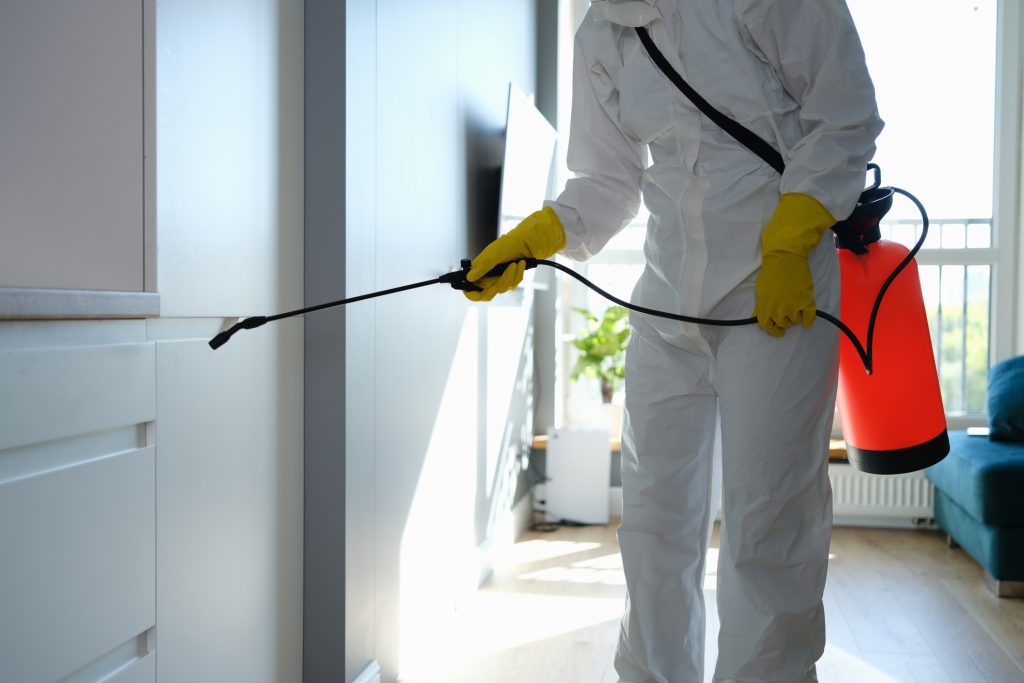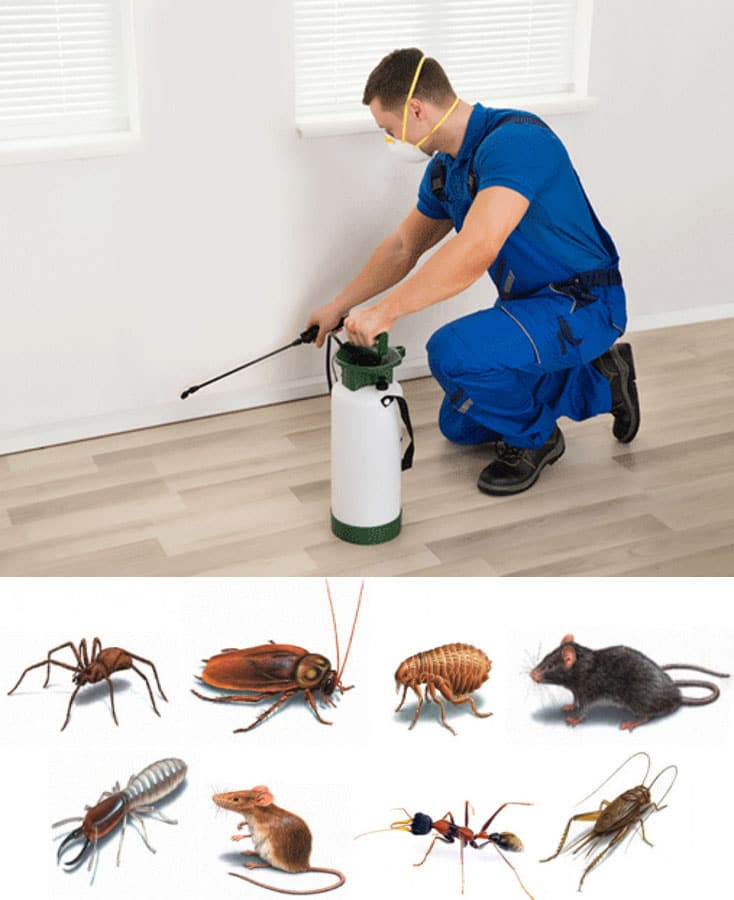Trustworthy Pest Control for total pest elimination.
Eco-Friendly Parasite Control Approaches for Managing Wildlife in Urban Locations
Urban areas frequently find themselves at the intersection of human task and wildlife, causing special challenges in insect administration. Green strategies emphasize sustainable conjunction, employing strategies such as habitat adjustment and all-natural repellents to alleviate human-wildlife conflicts. These approaches not only safeguard the atmosphere yet also boost neighborhood engagement in wild animals monitoring. As city populations remain to grow, comprehending the characteristics of wild animals communications comes to be progressively important. What cutting-edge techniques can be implemented to ensure both environmental equilibrium and city security? Discovering this inquiry reveals a compelling landscape of prospective options.
Comprehending Urban Wildlife Characteristics
Understanding Urban Wild animals Dynamics is vital for establishing reliable and eco-friendly insect control approaches. Urban areas are progressively ending up being habitats for numerous wild animals types, driven by elements such as environment fragmentation, food accessibility, and human encroachment. Recognizing these dynamics permits a nuanced method to pest administration that straightens with ecological principles.
Urban wildlife frequently consists of types such as raccoons, squirrels, and birds, which adjust to city settings, locating particular niches in eco-friendly areas, parks, and also houses. Their presence can bring about conflicts with humans, especially when they manipulate human resources for food and sanctuary. Understanding the behaviors and eco-friendly roles of these varieties notifies approaches that reduce negative communications while advertising biodiversity.
Additionally, acknowledging the interdependencies within urban communities assists in recognizing critical locations for environment preservation and restoration. This understanding adds to the development of integrated parasite administration (IPM) strategies that consider the eco-friendly balance, thus lowering reliance on harmful chemicals. By promoting conjunction in between people and metropolitan wildlife, cities can develop healthier settings that benefit both homeowners and local ecosystems, leading the means for sustainable urban living.
All-natural Repellents and Deterrents
All-natural repellents and deterrents use a lasting choice to conventional parasite control approaches by harnessing the power of nature to maintain unwanted types at bay. These environment-friendly solutions generally utilize plant-based components, essential oils, and other normally happening compounds that hinder bugs without hurting the environment.
One efficient natural repellent is peppermint oil, which is understood to fend off rats and bugs. Its solid scent is unpleasant to lots of pests, making it a popular selection for urban settings. Vinegar and citrus peels can serve as deterrents, as their strong odors are typically uninviting to different wild animals.
Additionally, diatomaceous earth is a natural powder that can be spread in locations susceptible to parasite task, effectively drying out and discouraging pests without posing dangers to non-target species. Furthermore, garlic sprays and neem oil are recognized for their capability to ward off a variety of insects, consisting of both pests and larger wild animals.
Carrying out these all-natural repellents not just minimizes reliance on chemical pesticides however also advertises a much healthier urban environment, promoting an extra balanced coexistence in between humans and wild animals. By using these methods, urban areas can properly take care of pest populaces while reducing environmental influence.
Habitat Modification Strategies
Effective environment adjustment strategies play a crucial role in lasting parasite administration by changing the environment to make it less conducive to pest invasions. By recognizing the eco-friendly characteristics of city areas, homeowner can implement calculated adjustments that prevent pests while advertising biodiversity.
(Mosquito control Port Charlotte)One primary strategy involves preserving correct hygiene. This includes routine waste removal, protecting trash can, and eliminating standing water to minimize reproducing websites for insects and rodents. In addition, landscaping techniques such as picking native plants can boost environmental equilibrium, providing environments for advantageous organisms while lessening resources for bugs.
One more essential technique is to secure access factors in structures. Examining and repairing cracks in structures, walls, and home windows can significantly reduce parasite accessibility. Moreover, developing physical obstacles, such as fencings or plant barriers, can prevent wildlife activity right into human-inhabited areas.
Integrated Bug Monitoring Practices
Structure upon habitat adjustment strategies, integrated parasite administration (IPM) methods offer an alternative strategy to regulating bug populations while decreasing ecological influence. IPM incorporates different strategies, consisting of biological, social, mechanical, and chemical controls, to accomplish effective parasite monitoring.
Biological control involves the intro of natural killers or bloodsuckers to reduce parasite populaces. Social practices, such as plant turning and cleanliness, interfere with pest life process and diminish their environments - Pest Control. Mechanical controls, like catches and barriers, provide immediate remedy for parasite pressures without chemical treatment
Chemical controls are utilized as a last option, concentrating on targeted applications that restrict injury to non-target species and the environment. The selection of eco-friendly chemicals, when necessary, is indispensable to the IPM structure. Additionally, checking bug populations and examining click this site potential damages assists educate decision-making, ensuring that interventions are timely and effective.
Area Involvement and Education

(Pest Control Services)Workshops and educational sessions can furnish locals with understanding concerning native species, habitat conservation, and effective safe parasite management techniques. Cooperation with colleges, regional companies, and government agencies further improves educational outreach, ensuring that necessary details reaches diverse audiences.
Additionally, community-led campaigns, such as area clean-up days and environment restoration jobs, not only advertise biodiversity however additionally strengthen neighborhood connections. Pest Control. By motivating homeowners to share their experiences and observations, neighborhoods can develop targeted methods that address particular regional bug problems
Integrating comments from homeowners into insect administration intends enables a more responsive and adaptive method to wildlife challenges. Inevitably, informed and engaged communities are key to achieving long-lasting success in eco-friendly parasite control, bring about healthier metropolitan settings that value both human and eco-friendly needs.

Verdict
To conclude, environmentally friendly insect control comes close to offer lasting solutions for managing metropolitan wildlife. By prioritizing environment alteration, making use of natural repellents, and implementing incorporated pest monitoring techniques, areas can promote an unified coexistence with neighborhood animals. Moreover, engaging residents via education and learning enhances understanding and urges accountable wild animals interactions. Ultimately, these approaches not only protect biodiversity however additionally promote ecological wellness, ensuring city areas continue to be lively communities where human beings and wildlife prosper together.